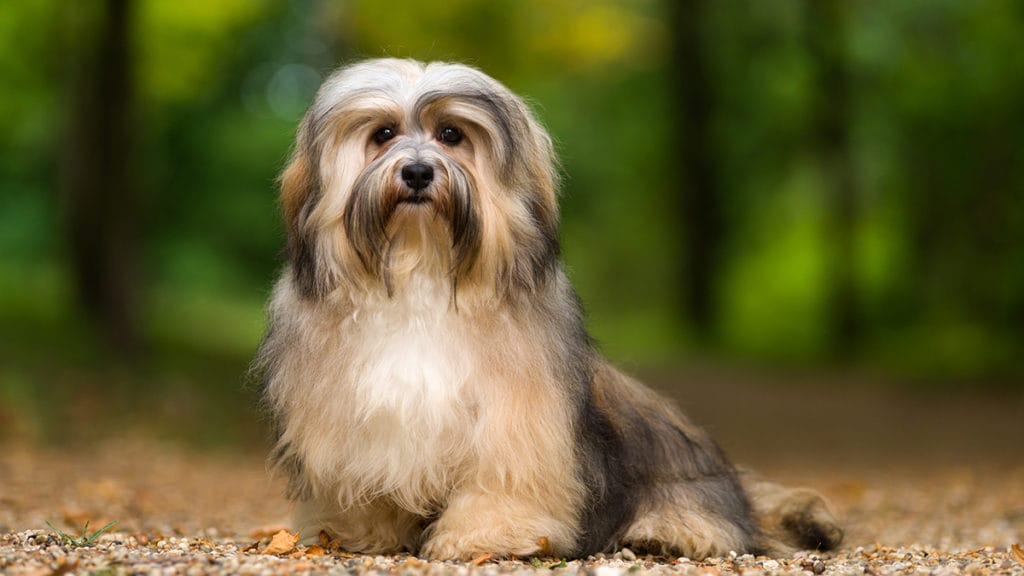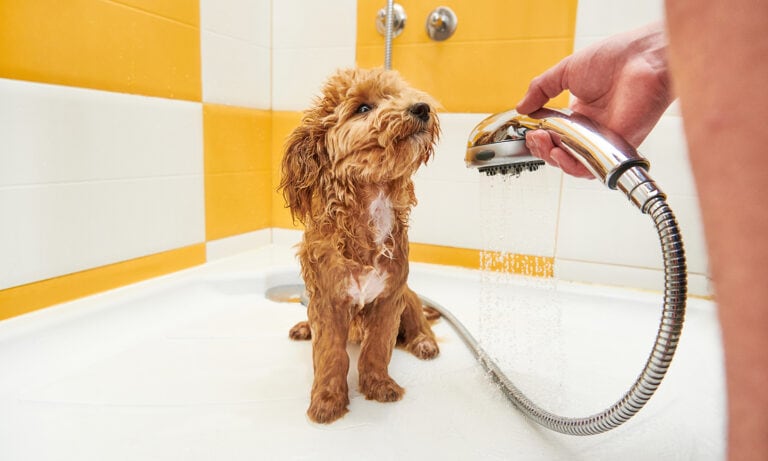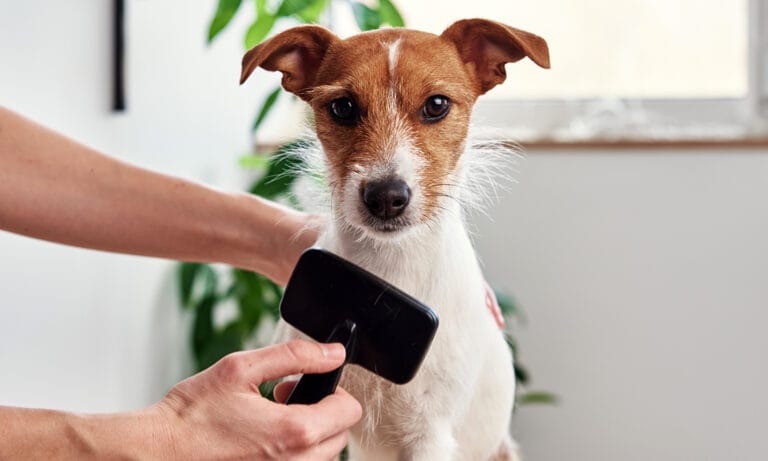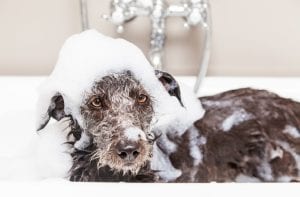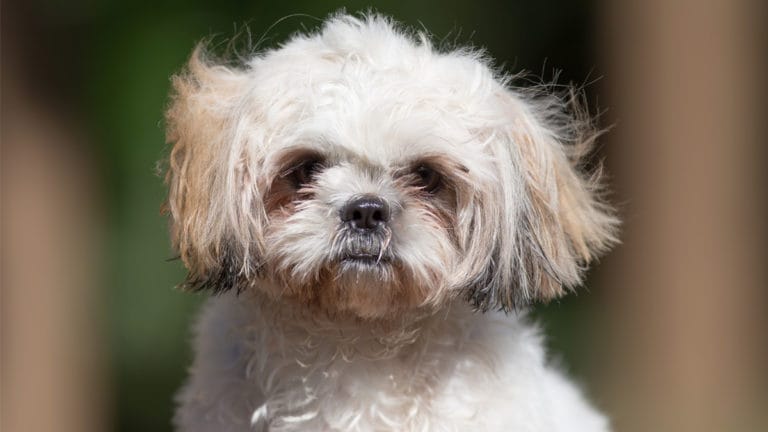The Havanese dog breed belongs to the family of dogs called the Bichons, which is French for “fleecy dog.” Bichon has become, with time and use, synonymous with a dog completely covered with hair. The Havanese, like other Bichon breeds, is known for its coat. And, of course, this coat and dog breed is at his best when the coat is correctly maintained. Here are four tips to help you keep your Havanese dog well groomed and at his best.
1. Bathing
Generally speaking, dogs should be bathed before being groomed. Remember that every time you bathe a Havanese, you eliminate from his coat the natural oils that keep him soft and shiny.
The Havanese that lives in a tropical climate needs to be bathed monthly if his coat is dirty, but one way to keep the dog’s coat clean is to give him dry baths with talcum powder. In a cold climate, the Havanese should be bathed less frequently, but his skin must be clean.
Since the coat is a significant factor in the beauty of the Havanese, take certain protective measures when bathing your dog. First of all, if the dog’s coat is matted and knotted, the tangles should be eliminated before bathing. To facilitate that effort, prepare a solution of water and coat conditioner to be sprayed on the dog’s coat as you patiently untangle it with a dog brush or rake, taking care not to pull out the hairs. Only after completely untangling the coat can you bathe the Havanese. A Havanese whose coat is properly cared for won’t have problems with tangles and can be bathed without any preparation other than a once-over.
In Cuba, the Havanese is usually bathed in cold water because of the hot climate, though warm water is used in winter. In cold climates, regulate the temperature of the bath to the surroundings, so the water is neither too hot nor too cold.
A coconut aloe vera or a similar shampoo will keep your dog’s skin moist. Wet your Havanese thoroughly and apply dog shampoo to the trunk, tail, legs, feet and, finally, the head, being careful to keep the ears dry by inserting cotton balls beforehand. Rinse your Havanese thoroughly, then apply a softener mixed with water. This can be left on the coat to make it softer and more flexible for grooming or it can be rinsed off, at your discretion.
While your Havanese is dripping wet, squeeze the water gently from the tufts and let the dog shake himself thoroughly. Then towel his coat gently to retain the softener, if you decided to leave it on as recommended.
2. Brushing
If you take your Havanese to a professional dog groomer, the groomer will first place the Havanese on a table, leashed for safety, and brush the dog’s coat as she fluffs it with a blow dryer on a low heat setting. You may prefer to use the blow dryer first and brush the coat once it is dry.
If you use the first method of grooming, use a brush or soft rake. With the second grooming method, you need a metal comb with separated teeth (about eight teeth per inch). In both cases, be aware that the Havanese has to be groomed by layers. That means that the different layers of the dog’s coat are raised and groomed separately, beginning with the layer closest to the skin and ending with the outer layer. Begin with the dog’s legs and the feet, continue with the tail and trunk, working from back to front, then do the chest and neck and, finally, the head. In the muzzle zone, it is preferable to brush with a smaller metal comb with closer teeth.
Avoid matting by using this method to groom your dry Havanese at least twice a week. When you’re combing, be careful not to pull out the dog’s hair. It’s best to work a small area at a time, slowly and patiently, to prevent the undesirable loss of hair. If you occasionally run into a matted layer, do the following:
Avoid cutting the knots on your Havanese. Try to untangle each knot with your fingers, pulling the hairs from the center outward. Once the knot is opened with the fingers, use a mat-and-tangle comb. This is a special comb that has long, well-spaced teeth with rounded ends to prevent skin injury. In using it, always hold the tuft of your dog’s hair between your fingers close to the skin so that the Havanese won’t be hurt. Also take care to prevent the unnecessary elimination of tufts.
Groom your Havanese in sections, but don’t divide the coat in half, as some people do, by creating a part that runs the full length of the back and even up the neck and head. This distorts the image of the Havanese. Rather, once you’ve combed an area and are certain the entire layer is untangled, brush the layer lightly and let it fall. The Havanese will shake himself and the hair will fall naturally where it belongs.
3. Eye Care
Sometimes the Havanese tears and, as a result, accumulates dirt below his eyes. When this happens, rinse your dog’s eyes with a saline solution and dry each one with a separate piece of cotton. You can also use a small fine-toothed comb to keep the area around the eyes clean.
Another method of keeping your dog’s face clean is to tie the head hair in a topknot so it doesn’t fall over the eyes. This method should be monitored by a professional groomer so the hair isn’t pulled or broken, especially if you plan to present your Havanese in a show, for this dog breed is not permitted to use topknots or any other kind of hair decoration.
4. Foot and Nail Care
As the Havanese grows and his coat becomes longer, the tufts of hair between the toes also grow, often until they totally cover the cushions of the feet. Your Havanese may become uncomfortable as his posture and movement are affected. Check the dog’s feet systematically and cut out these tufts with small scissors so that the cushions of the feet are completely hair-free.
The nails must also be monitored. Your dog’s nails should not touch the ground, much less curl into it. Your Havanese may file his nails naturally as he walks on hard surfaces, maintaining them at the proper length. If not, you will have to prevent discomfort and deformation of the dog’s feet by cutting the nails—especially the nail of the supplementary toe (dewclaw), if that exists, for it should never touch the ground.
Use dog nail clippers, and cut only the protruding part of the nail to avoid hurting your Havanese. First, raise your dog’s foot and hold it against the light to observe what is called the quick, which is the vein that runs through the dog’s nail. Do not cut into the quick, or the nail will bleed. If the nails are black, cut a small triangle from the interior to the exterior edge of the nail, no deeper than necessary. Should bleeding occur, press ice on the cut or press your thumb on the affected area until the bleeding stops. You may also apply a styptic powder or pencil.
It’s best to accustom your Havanese dog to nail-cutting and foot care as a puppy so that he comes to accept them as a normal part of dog life. Moreover, systematic nail cutting helps the quick contract over time.
Excerpt from Havanese, part of the Comprehensive Owner’s Guide series, with permission from its publisher, Kennel Club Books, a division of BowTie Inc.
Featured Image: Via Shutterstock/Dorottya Mathe
Share:
